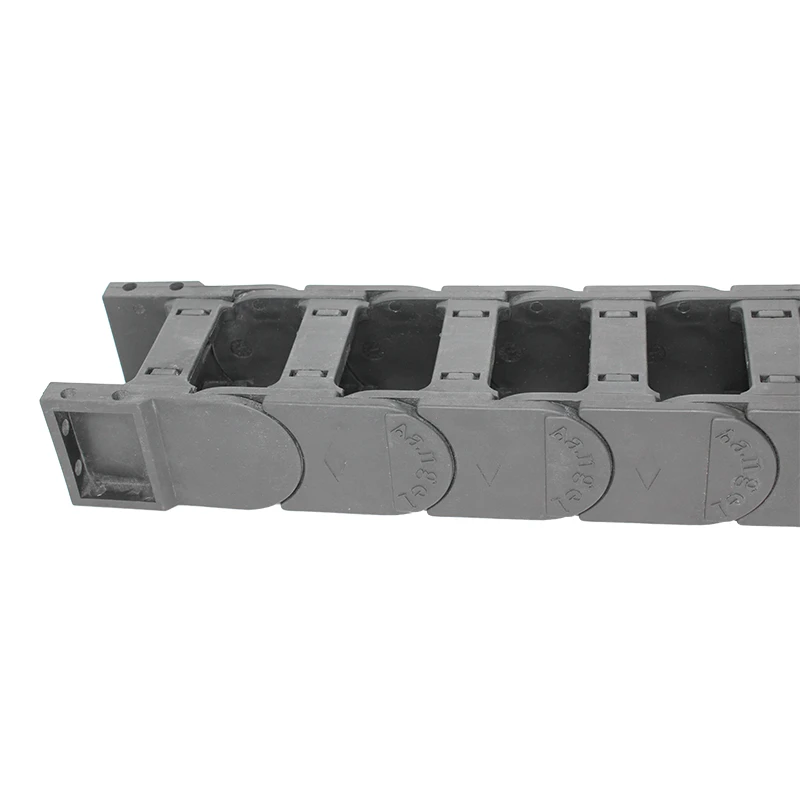cnc cable drag chain
Understanding CNC Cable Drag Chains Enhancing Efficiency and Safety in Industrial Applications
In today’s rapidly evolving industrial landscape, the management of cables and hoses in machinery has become increasingly vital. One of the most effective solutions that have emerged to tackle this challenge is the CNC cable drag chain. These components are essential for safeguarding cables and hoses, allowing for smooth and uninterrupted operation of CNC machines and other automated systems. This article delves into what CNC cable drag chains are, their benefits, and their applications in various industries.
What is a CNC Cable Drag Chain?
A CNC cable drag chain, also referred to as a cable carrier or cable track, is a specialized device designed to guide and protect moving cables and hoses in a wide variety of machinery. These chains consist of interconnected links that form a flexible conduit through which cables and hoses can move as the machinery operates. The primary function of a drag chain is to prevent wear and tear on cables caused by constant movement, bending, and friction, thereby extending their lifespan and ensuring operational reliability.
Key Benefits of Using CNC Cable Drag Chains
1. Protection of Cables and Hoses One of the most significant advantages of cable drag chains is their ability to protect cables and hoses from mechanical damage due to movement. This protection is crucial when cables are subject to repeated flexing, which can lead to insulation wear, short circuits, and ultimately, equipment failure.
2. Reduced Maintenance Costs By preventing damage to cables, drag chains contribute to lower maintenance costs. Fewer instances of cable replacement and repair mean that companies can allocate resources more efficiently and minimize downtime due to equipment malfunction.
3. Organized Cable Management Cable drag chains help maintain an organized workspace by keeping cables neatly contained within the chain. This not only improves the aesthetic appeal of the workspace but also reduces the risk of tripping hazards and tangles that can disrupt operations.
cnc cable drag chain

4. Increased Productivity With a reliable cable management system in place, machinery can operate more smoothly and efficiently. This leads to increased productivity, as operators spend less time managing cable issues and more time focusing on their core tasks.
5. Versatility CNC cable drag chains are available in various sizes, materials, and configurations to accommodate different applications. Whether used in CNC machines, robotics, or automated production lines, these drag chains can be tailored to meet specific operational requirements.
Applications in Various Industries
CNC cable drag chains are utilized across a range of industries, including manufacturing, automotive, aerospace, and robotics. In manufacturing environments, they are commonly found on CNC milling and lathe machines, where cables must navigate complex movements. In the robotics sector, drag chains play a critical role in enabling smooth movement of robotic arms, ensuring that the cables don’t become pinched or damaged during operation.
In the automotive industry, drag chains help manage cables for conveyor systems, assembly lines, and testing equipment, enhancing safety and efficiency. The aerospace sector also benefits from these systems by utilizing cable drag chains in aircraft assembly and maintenance operations, where reliability and safety are paramount.
Conclusion
As industries continue to innovate and automate, the importance of reliable cable management systems like CNC cable drag chains cannot be overstated. By offering protection, organization, and efficiency, these components have become indispensable in modern manufacturing and automation processes. Their ability to enhance the operational lifespan of cables and reduce maintenance costs positions CNC cable drag chains as a vital investment for businesses aiming to optimize their machinery and achieve greater productivity. Embracing this technology not only fosters a safer working environment but also paves the way for future advancements in industrial automation.








